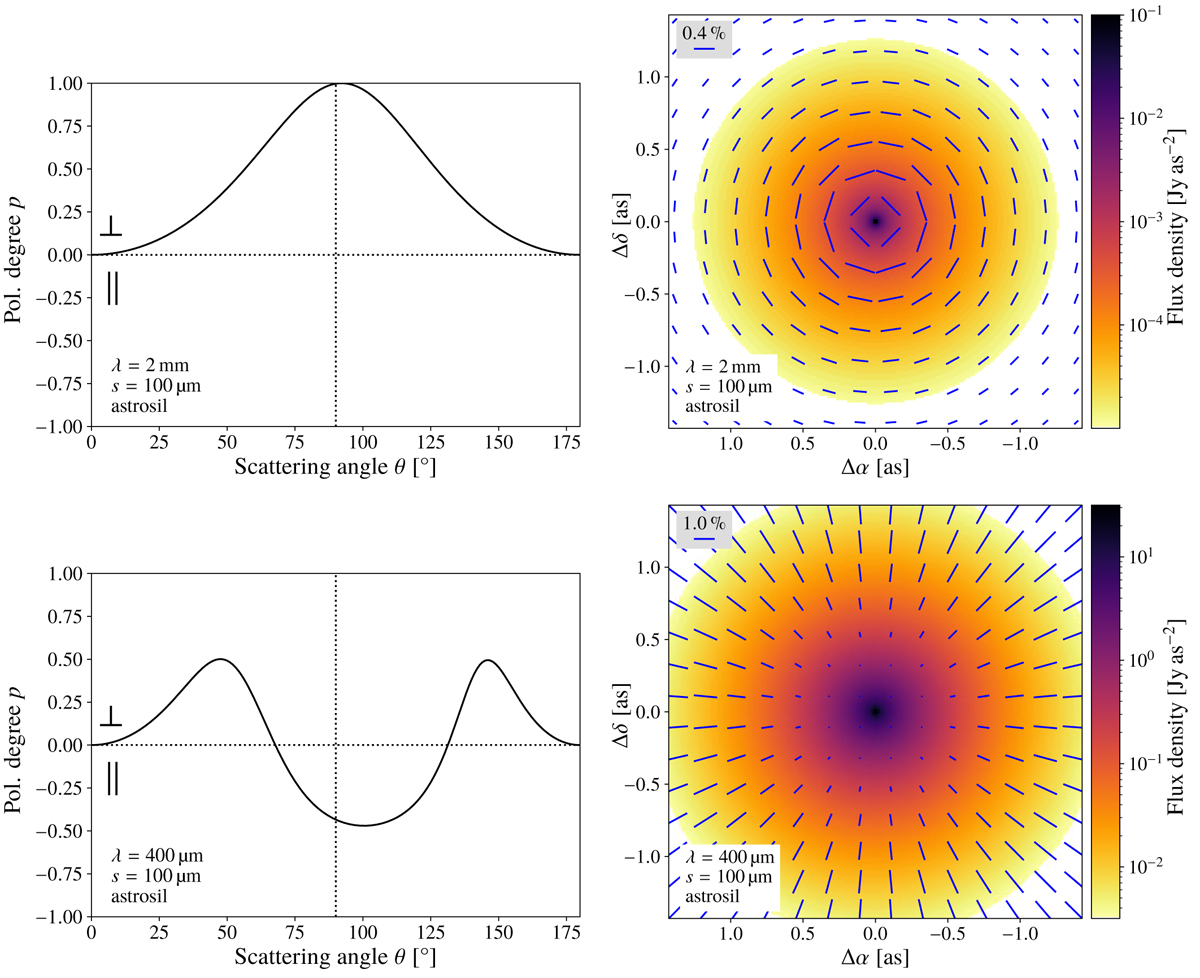Fig. 1.

Left: maximum degree of polarization p = −𝒮12/𝒮11 for single scattering as a function of the scattering angle θ for astronomical silicate (astrosil). The incident light is unpolarized. The dashed vertical and horizontal lines indicate θ = 90° and p = 0, respectively. The symbols on the left indicate the orientation of the polarization vector after scattering, that is, perpendicular (p > 0) and parallel (p < 0) to the scattering plane. Right: intensity map of a face-on protoplanetary disk model with superimposed polarization vectors, calculated with the radiative transfer code POLARIS for the case of Rayleigh scattering, that is, x = 0.3 (top) and for the case of x = 1.9 (bottom) where a 90° change of the polarization vector orientation occurs. These maps include direct re-emission and scattered light. The length of the polarization vectors are scaled to the maximum polarization degree present in each figure.
Current usage metrics show cumulative count of Article Views (full-text article views including HTML views, PDF and ePub downloads, according to the available data) and Abstracts Views on Vision4Press platform.
Data correspond to usage on the plateform after 2015. The current usage metrics is available 48-96 hours after online publication and is updated daily on week days.
Initial download of the metrics may take a while.


